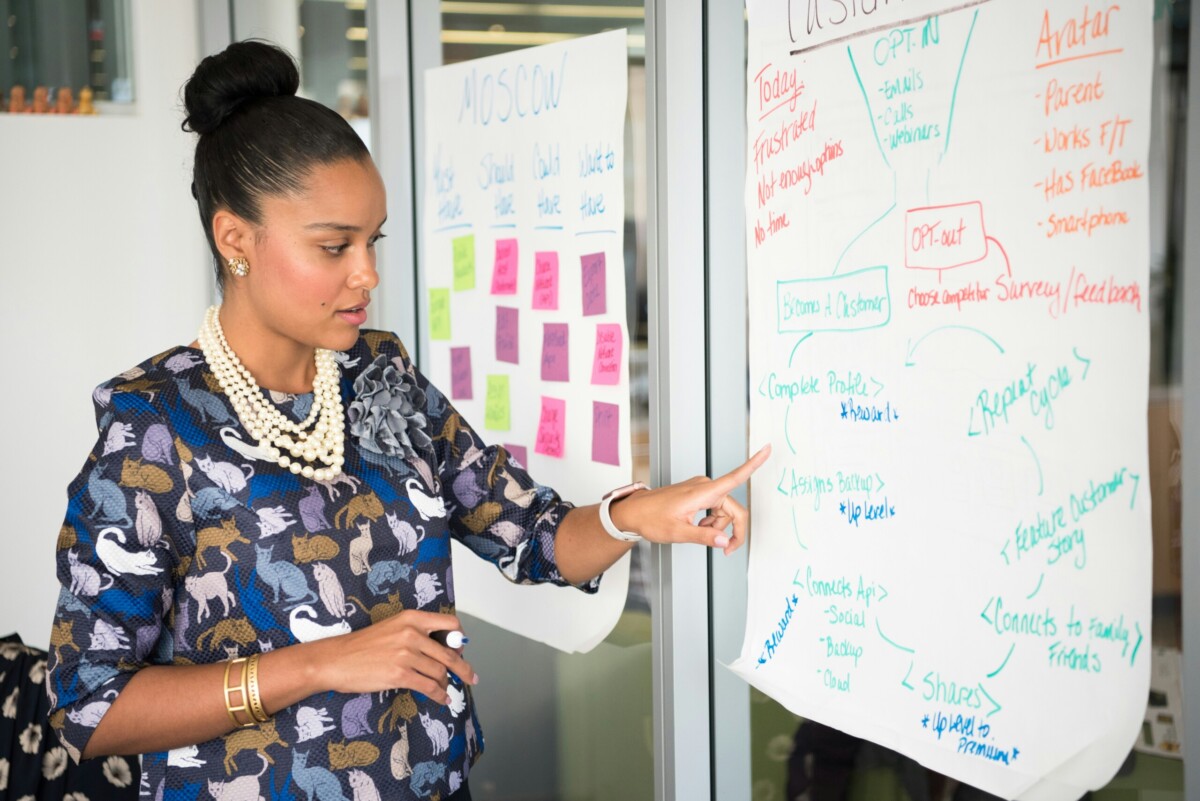 Can AI help your nonprofit connect more authentically with people so you, and the social benefit sector as a whole, do a more effective job addressing today’s most pressing problems? In other words, can AI help you drive loyalty?
Can AI help your nonprofit connect more authentically with people so you, and the social benefit sector as a whole, do a more effective job addressing today’s most pressing problems? In other words, can AI help you drive loyalty?
The short answer is yes. But it won’t happen if you keep working as you’ve always worked.
Last week, in Part 1 of this two-parter, I offered two truths, two challenges and two suggestions for you to consider if you want to drive generosity and philanthropy in an era of constant demands for attention, diminished trust and a crisis in generosity. Today I’ll illuminate two more.
TRUTH #3: AI Seeks What Human Attention and Innate Natures Seek
Human beings naturally seek connection.
We’re wired for eusociality (a drive to join) and caring (empathy). In fact, this is what Darwin’s theory of survival was really about. Not “survival of the fittest” proposed by Herbert Spencer, not Darwin. Spencer’s model was more like the Hunger Games model where only the strongest individuals got to eat and live Darwin proposed “ survival of the kindest,” where those communities who banded together to care for their members survived.
This type of connection is indeed radical. And intimate. And essential. We need to actively cultivate it.
“We humans are blessed with an instinct for generosity. But the structures of the modern world can suppress that instinct. We’re isolated from each other—and that isolation matters not just for our mental health, but for society’s health. When we look closely, we see that generosity is not just a beautiful emotion, it is a fuel for our economy and a foundation for our communities.”
— Jacob Harold, former CEO of GuideStar, author of The Toolbox
CHALLENGE #3: It’s Difficult to Build Intimate Connection in an Overcrowded Economy
Perhaps one of the greatest ironies of our time, with all the tools at our disposal to be more personal, is how difficult it is to connect on a human level.
In attempting to be more human, we’ve often become more robotic. We “segment” our communications, but using broad brush categories that don’t meaningfully connect with message recipients. I identify based on things like my job, family and social relationships, culture, religion, politics, hobbies and personality traits (e.g., openness; conscientiousness; extraversion; agreeableness and neuroticism). I don’t really think about the fact I’m a “donor vs. prospect,” a “major donor,” “recent donor,” and so forth. Nor do I thing that much about demographic factors like age, education, household income, family members and the like.
I’ll connect with a message that speaks directly and personally to me. Nonprofits know this, but until recently the cost of purchasing software to sort donors into segments using psychological insights has been out of reach for all but the largest organizations. Personalizing communications at scale has been an unattainable dream, particularly with all the demands upon people’s attention that have negatively impacted their ability to focus.
Want some quantification of those demands? Did you know the average person interacts with 298 algorithms/day? It will be over 5,000/day by 2025. No wonder it’s so hard to connect meaningfully, and personally, with folks.
Consider that while social media was built to bring people together, trying to monetize attention became a doomscrolling race to the bottom of the brainstem. Tristan Harris, former Google Ethicist and Center for Humane Technology President, recently sounded the alarm in testimony before the U.S. Congress.
“How can we solve the world’s most urgent problems if we’ve downgraded our attention spans, downgraded our capacity for complexity and nuance, downgraded our shared truth, downgraded our beliefs into conspiracy theory thinking that we can’t construct shared agendas to solve our problems?”
— Tristan Harris
SUGGESTION #3: Focus on Responsible and Beneficial to Humanity AI to Foster Connections Between Donors, Nonprofit Missions and the World
Finally, we have something truly scalable to enable creation of powerful connections that have the ability to quash the “generosity crisis,” and drive results to turn the downward giving trend upward.
The real currency today is not dollars, euros, pesos, rubles, yen or yuan. The only thing we really have to spend in the attention economy (i.e., the only thing that will secure us solutions to pressing problems) is connection.
Connection doesn’t come from constant hammering for attention. It reveals itself in the sacred space between the mission and the donor. Neither can do it alone.
Intimacy is how you build connection. It’s a “together” type of project.
AI is a tool that can help nonprofits foster the connections needed to yield workable solutions.
AI enables charities to dig into behavior patterns and preferences to create messages that hit home and inspire action. It will require a lot of change, and won’t be an easy road to travel. But, consider the alternative.
If you want to end up exactly where you are today, then keep doing what you did yesterday.
If you want to evolve and grow, reframe your process for connecting with folks.
“This is no longer a race to the bottom of the brainstem. It’s a race to intimacy.”
— Tristan Harris
TRUTH #4: This is a Time to Actively Build Trust
For the past 24 years, the Edelman Trust Barometer has measured how people worldwide feel about brands, businesses, government, media, nonprofit institutions and more. And trust is at historic lows.
The fundraising sector lives and dies on trust.
Building and preserving trust, therefor, is central to your job as a philanthropy facilitator. It’s essential to relationship building, as trust is the foundation of all lasting relationships. And relationship building – connection – is the foundation of fundraising.
It’s funny. I’ve been in fundraising over four decades. One of the first things I ever learned, from mentor Hank Rosso, is “people give to people.” Not to institutions. With all the innovation we’ve seen over the past decades, this remains true. In fact, it’s arguably truer than ever.
The radical, trust-based connection essential to facilitate philanthropy today requires being personal.
“The future of generosity in America is not guaranteed.”
— The Generosity Commission 2020
CHALLENGE #4: How to Focus on Retention and Lifetime Value Over Current Revenue at a Time When Trust is Eroding
Today’s challenge is about finding, keeping, and upgrading, all donors – of whatever shape or size. It’s not just about one-time acquisition, nor is it just about major donors.
Sure, you need to keep the lights on today. But you’re doing no one any favors if you don’t simultaneously envision a future where the lights are not only still on, but are brighter than ever.
Even if your less-than-ideal strategies worked for you in the past, you can no longer rest on your laurels, confident in the notion Americans are a generous people. While true that until fairly recently giving had been close to 2% of Domestic Gross Product since W.W.II, and two-thirds of Americans gave to charity, those days are gone. Now, less than 50% of Americans give. We’ve long thought of Americans as a “generous people.” Now, givers are in the minority.
What will happen if you don’t change, and what will it take to change?
One of the best ways I know to resolve a problem is to begin by defining the problem. Here are some approaches:
- Engage in a group brainstorming and problem-solving session.
- Bring in a specialist to facilitate a group meeting.
- Brainstorm how you can create radical connection at scale (Note: AI is probably the only scalable solution).
- Invest in technology that helps you build intimacy at scale.
- Develop policies and procedures about using AI to create efficiencies and build meaningful personal connections. Keep in mind that AI for nonprofits moving forward is a given. Effective implementation is not. Irresponsible deployment will decrease trust and giving.
Once the problem is defined, you can begin to innovate. How you approach the current zeitgeist is up to you. But, approach it you must.
“By embracing modern technology, organizations can enhance donors’ giving journeys, instilling a profound sense of purpose and fulfillment.”
—Becca Gregory Segovia, Classy, writing in The Chronicle of Philanthropy
SUGGESTION #4: Rethink Your Approach. Relationships, Not Revenue
When you make giving transactional, people feel they aren’t needed. Just their money.
Stop treating donors like they’re “fixed” ATMs.
People are not machines. Their identities, values and preferences are not set in stone. Who they are today is not necessarily who they’ll be tomorrow.
If in the past you’ve had a firehose “spray and pray” approach to fundraising, consider that more is not necessarily better. Sometimes going deeper is better. Quality, not quantity.
A simple way to go beyond the ATM paradigm is to survey your supporters.
Ask donors to rate themselves from 1 to 10 on a scale of how connected to you they feel. Or you could ask them how they rate you compared with other charities they support. Or ask them if they’d consider becoming more involved with your organization. You can find other questions and examples here. Not only will you be enlightened by the answers – you’ll know instantly who your strongest donors are – the very act of asking donors for feedback helps cement their bonds with you..
Find out what makes people feel connected to you. Do more of that!
Getting to the place of radical connection means they’d go out of their way for you, and you’d do the same for them. It’s about building an emotional bond.
CONCLUSION: AI Can Foster Beneficial to Humanity Interconnection that Drives Love, Loyalty, Reciprocity and Generosity
That’s a mouthful, but it bears your consideration.
AI can pave the way for more strategic, precision philanthropy.
Consider the tools at your disposal.
- Predictive AI is about creating specificity about who’s going to give, how much, when and for what cause.
- Generative AI creates true personalization.
Every person is measured as an N of one. In essence, people are invited to take society’s problems personally – in a manner that resonates specifically with them.
There’s no such thing as “donors” and “prospects.” People aren’t just lemmings marching up the donor pyramid. Every person has a unique relationship to your sacred space. You can use AI to figure this out.
Losers will be those organizations that don’t use it.
- Connection is the currency in the attention economy.
- Increase trust to build relationships and loyalty that increase lifetime value
- Create incentives for staff that reward relationships over revenue
- Empower fundraisers to use AI to radically connect, responsibly and beneficially.
Generosity and connection are intertwined, and must be at the forefront of how we strategize to solve our most pressing problems. This means you, the philanthropy facilitator (aka fundraiser), must reimagine and reframe your relationships with constituents of all shapes and sizes.
Want more on this topic? Read The Generosity Crisis: The Case for Radical Connection to Solve Humanity’s Greatest Challenges, by Nathan Chappell and Michael Ashley.
#Loyalty #Nonprofit #Donor #Currency #Part








